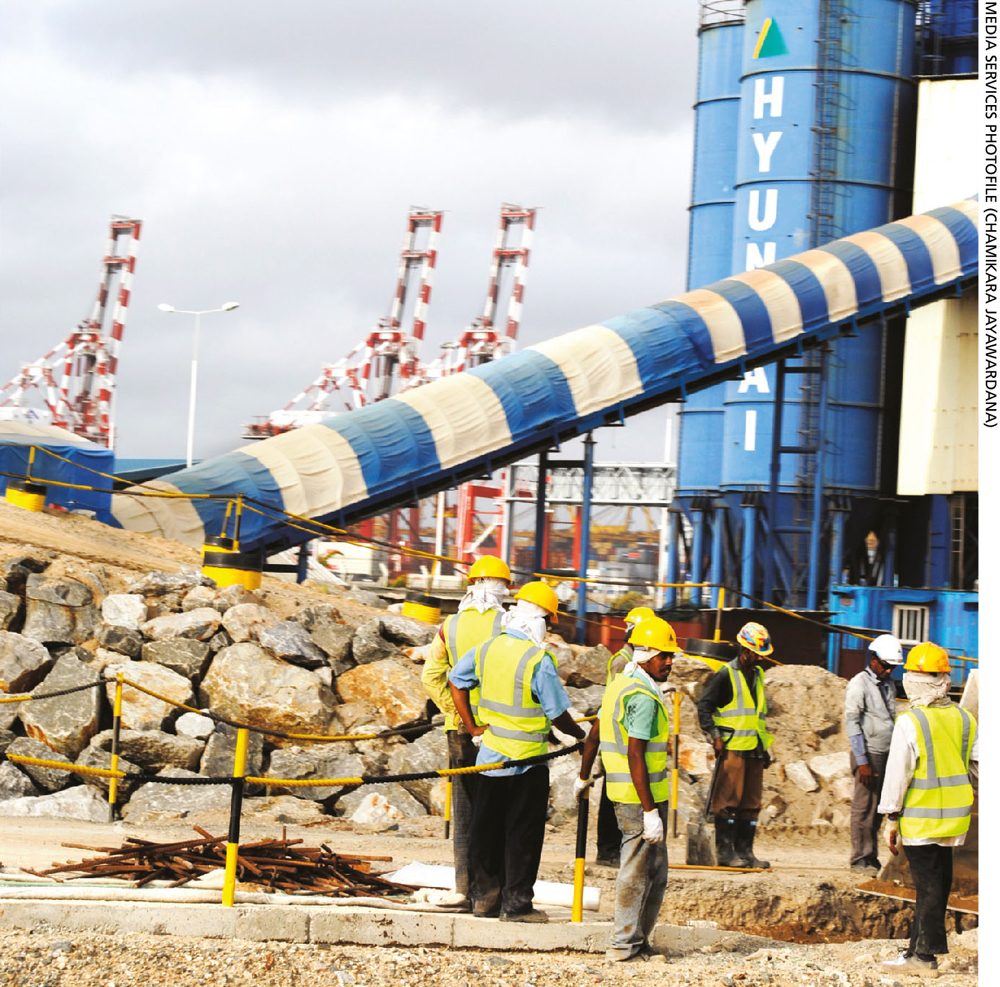THE SRI LANKA STORY
TIME TO LEVERAGE ON LABOUR
Tharindra Gooneratne turns the spotlight on our productivity faux pas

“Not even a little water that comes from the rain must flow into the ocean without being made useful to man” – King Parakramabahu I. He understood the value of scarce resources and realised that Lanka was a tiny state in comparison to its far larger neighbours and the only way for the island nation to become ‘the rice bowl of Asia’ was to ensure its people made maximum use of limited resources.
If the great king were alive today, would he be pleased with our progress on this front?
Sri Lanka was recently ranked 85th in the world in the Global Competitiveness Index published by the World Economic Forum (WEF), and below countries such as Rwanda, Tajikistan and Guatemala. To those who argue that we’re still recovering from the almost three decade civil war, consider this: in 2008, at the height of the conflict, the same index ranked Sri Lanka at No. 77 in the world.
We clearly have a problem. As a small nation that is dwarfed by much larger regional countries, higher productivity and competitiveness are critical for the developmental journey that we’re attempting to embark upon.
So how do we make optimal use of our limited resources?
We can start by addressing youth unemployment. At almost 20 percent, Sri Lanka’s youth unemployment rate is the highest in South Asia. Limited access to education has been a major barrier to solving the problem. Today, almost 40 percent of students in Sri Lanka study at schools that do not have classes beyond Year 11. However, the problem cannot be solved by simply improving access to education.
We need to admit that our education system itself has been a failure. A World Bank study conducted in 2011 for example, found that an inadequately educated workforce was one of the three major issues facing Sri Lankan businesses.
If we’re to maximise the utilisation of our labour pool, we also need an overhaul of our draconian labour laws.
According to the World Bank, redundancy dismissal in Sri Lanka involves an average severance pay of 54 weeks. The comparative figures for Singapore, India and Vietnam are zero, 11 and 25 weeks respectively. We need to find the right balance between protecting our workers, and ensuring that both local and foreign investors are encouraged to make maximum use of the available labour pool.
We must also admit that we will never reach the pinnacle of success as a country unless every Sri Lankan is offered equal access to employment regardless of gender, religion or race. Sri Lanka’s performance especially on the gender front has been abysmal. In 1990, only 46 percent of Sri Lankan females participated in the labour force; by 2017, this had dropped to 35 percent whereas the male participation rate remained at a healthy 74 percent.
There are myriad reasons for this unfortunate state of events.
Social and cultural barriers rank topmost on this list. We also have laws in place that restrict employment opportunities available to women – for example, our laws do not enable women to work the same night hours as men.
How can we expect to maximise productivity if we unfairly restrict employment opportunities for a large portion of the population?
On a lighter note, we also need to admit that it is impossible to maximise national productivity whilst enjoying the highest number of public holidays in the world. Today, we have no fewer than 25 public holidays in a calendar year; in comparison, Singapore has 11.
We may never be able to live up to King Parakramabahu I’s expectations. However, we definitely need to do better than the status quo because higher productivity is a vital cog in the wheel of Sri Lanka’s march to prosperity.





There are many eye openers that can be given due consideration. If Sri Lanka is to turn on productivity, due reforms should be made from educational to legal aspects (not only rights but for the duties of employees) and especially the latter should be made enforceable.
Employee job security with avenues for effective and unbiased grievance handling in conflicts at the workplace – which Sri Lanka seems to have taken as trivial – is a mandatory plus point for productivity. Simultaneously, the employee is to be subject to penalty if his duties and integrity are compromised. In this backdrop, only if these are enforceable, is it rational to relax the amount of severance pay in a dismissal.
An adage goes: “Duties of a job are not secondary to duties to god.” Modern management concepts voice that ‘employees are the greatest assets.’ So why not make the best by embracing these two? It should be stressed that within the 40 percent of students who do not take classes beyond Year 11, there is dearth of qualified teachers for principle subjects like Maths, Science, and English that lay the basic foundation for a country’s labour pool in making a skilled workforce.
In addition, our education curriculum needs to be revised on a timely basis so that the labour pool does not become obsolete with the required skills that are demanded in the job market.
Flexi working and staggered hours, transport facilities provided by the employer, similar allowances and daycare facilities will stimulate more female participation in the workforce, thus reducing the soaring unemployment rate in Sri Lanka.
On one hand, benchmarks are useful, yet some aspects like transportation have to be considered in the Sri Lankan context. Compared to Singapore, a majority of Sri Lanka’s labour pool commutes to work in public transport. Needless to say that the transport network of Singapore is unmatched with that of Sri Lanka. So, workforce exhaustion is also a drain on the limited labour resource.
Last but not least, the safety valves that function multi-ways need to be switched on so that there will be fewer disruptions and higher productivity in Sri Lanka.